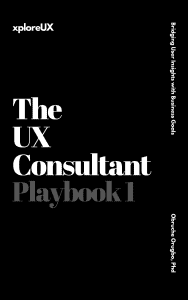
Advanced UX Strategies have become an essential catalyst for boosting productivity and reducing errors in manufacturing. Designers and engineers now collaborate to create systems that do more than just function smoothly; they also provide clear guidance and intuitive controls for operators. By focusing on user experience, production lines can be streamlined, staff can operate machinery with greater confidence, and decision-makers can gain detailed insights into day-to-day performance. This approach extends to all areas of manufacturing, from shop-floor devices to enterprise-wide software solutions. Businesses that invest in smart design, thorough testing, and consistent feedback loops can anticipate improved outputs, enhanced staff engagement, and a sharper competitive edge. Furthermore, these methods introduce a philosophy of ongoing refinement, ensuring that every interaction is shaped to meet both present and upcoming requirements.
Whether one manages a modest workshop or oversees a large-scale assembly line, Advanced UX Strategies provide practical solutions for common bottlenecks such as unclear controls, repetitive tasks, and inefficient communication. By examining the growing importance of user experience in manufacturing, this article will detail how these principles can be successfully adopted to promote higher efficiency, better safety records, and positive outcomes for both employees and organisational leaders.
In many production settings, effectiveness hinges on crystal-clear instructions, dependable machinery, and the speed at which operators can switch between different tasks. This is where Advanced UX Strategies can truly excel. By developing designs that are coherent and straightforward, teams can cut down on training time and smoothly transition between multiple assignments. Moreover, interfaces that show real-time data in an accessible format enable workers to make informed decisions without sifting through extensive reports. These enhancements significantly lower the probability of errors, leading to savings in both time and resources.
A key advantage of improved user experience in manufacturing is the noticeable impact on overall performance. Simpler controls typically translate to fewer mistakes, reduced chances of product defects, and swifter turnaround times. Additionally, when staff feel more at ease and self-assured in their tools, workplace morale tends to rise, resulting in stronger staff retention and minimal downtime. Advanced UX Strategies play a crucial role in uniting human skill with machine capability, ensuring technology operates in service to people rather than creating extra hurdles for them.
Effective user experience design revolves around three main pillars: accessibility, readability, and consistency. Accessibility ensures that team members from different backgrounds can understand and use software or equipment without confusion. Readability focuses on delivering clear information, labels, and instructions so that users never have to guess how to proceed. Consistency ensures that once employees master one system, they can effortlessly apply that knowledge to other related systems. Weaving these principles into every phase of product development allows businesses to tap into the power of Advanced UX Strategies .
Beyond these core ideas, manufacturers benefit from a user-focused design process. This involves bringing actual operators, technicians, and line supervisors into the design and testing stages, gathering direct feedback, and making iterative refinements. Such collaboration can expose small but critical issues—perhaps a symbol on a control panel is easily misread or a login process is too convoluted. By solving these challenges through Advanced UX Strategies , companies create a workplace where time spent troubleshooting is drastically reduced, and more energy is devoted to innovation, steady output, and continuous progress.
Introducing Advanced UX Strategies into manufacturing can begin with a range of user research methods, including interviews, focus groups, and direct observation of operators in action. These tactics reveal how teams interact with existing systems and highlight the areas most in need of improvement. The findings guide the development of prototypes, which can be tested under realistic conditions before large-scale deployment. Whether through physical mock-ups, wireframes, or interactive simulations, thorough testing ensures that the end design resonates with the actual users who rely on the systems every day. Iteration becomes vital throughout this process, as feedback leads to adjustments that refine and perfect the solution.
Moreover, data analytics can drive significant user experience improvements. By employing specialised software, manufacturers can track critical metrics such as downtime, user missteps, and task completion speeds. Correlating these figures with user feedback makes it possible to pinpoint precisely where improvements should be prioritised. Pairing such insights with Advanced UX Strategies creates a sustainable loop of enhancement, as minor tweaks can be swiftly implemented and validated through continuous performance monitoring. This structured approach helps ensure every update translates to clear, measurable benefits.
Safety is paramount in manufacturing, and thoughtful user experience design can play a major part in preventing accidents. When warnings and hazard indicators are immediately visible and easy to interpret, operators are far less likely to make risky mistakes. Advanced UX Strategies prioritise interfaces that organise related tasks logically and respond quickly to user input, minimising any uncertainty about system status. Additionally, crucial safety instructions can be built into digital interfaces, offering a constant reference point for correct equipment handling. This proactive design principle instils confidence in workers and helps maintain a safe operating environment.
Reducing errors has a direct, measurable effect on costs. Mistakes—such as using the wrong materials, missing vital alerts, or fumbling with complicated interface steps—can cause wasted resources, machine malfunctions, or compromised final products. By using Advanced UX Strategies to develop systems that highlight important data and guide operators with clarity, manufacturers can avoid such pitfalls. This approach is particularly valuable for detailed, multi-step procedures, where a single oversight may grind progress to a halt or lead to rework. Over time, maintaining an emphasis on user experience not only preserves resources but also fosters a culture of attentive, responsible operations.
Manufacturing frequently involves multiple departments and teams that must coordinate their efforts. Seamless communication is key, and well-planned user experience design can help streamline these channels. For example, Advanced UX Strategies encourage the creation of intuitive dashboards that summarise production metrics and provide them to the right people as events occur. By presenting the information in a clear, organised format, employees can grasp complex data rapidly and jointly address any issues that arise. This minimises the delays associated with outdated or confusing reports.
Beyond dashboards, user-focused principles can dramatically improve messaging applications and collaborative platforms. When people find it simple to share ideas, alert colleagues to potential problems, or propose solutions, they can work as a cohesive unit. This results in better decision-making and more consistent outputs, as key details are less likely to slip through the cracks. Combining these enhancements with Advanced UX Strategies creates an environment where transparency is valued, rapid responses are facilitated, and objectives are pursued as a united front.
As a manufacturing operation grows—perhaps by adding new product lines or increasing production volumes—complexity escalates. Ensuring that each new machine or system is designed with user needs at the forefront helps maintain control during expansion. Through Advanced UX Strategies , fresh interfaces and updated controls can be fine-tuned for simplicity, speeding up onboarding and lowering the risk of process interruptions. This not only makes the transition phase smoother but also encourages long-term flexibility, so teams can respond quickly as the market evolves or as technological requirements change.
Scaling also involves integrating multiple systems, which might include resource management platforms, automated monitoring tools, and customer order interfaces. Advanced UX Strategies can harmonise user experiences by applying consistent design features and coherent navigation methods across all these solutions. In doing so, employees will not have to relearn processes when moving from one application to another, preserving valuable time and energy. A unified user experience eliminates frustration, enabling a workforce that is more adept at tackling fresh challenges and consistently meeting production targets.
Manufacturing has seen rapid advances in automation, artificial intelligence, and connected devices. These innovations deliver opportunities to gather live operational data, predict machine failures before they happen, and supervise production more precisely. Yet, realising the full potential of these breakthroughs requires coupling them with Advanced UX Strategies . When operators can see exactly how data applies to their immediate tasks, they can act on it swiftly to prevent downtime or address quality issues. Intelligent alert systems, meanwhile, deliver timely notifications that keep staff from missing urgent events.
Augmented reality (AR) and virtual reality (VR) also hold great promise for refining user experience in the factory setting. AR can display interactive guides atop physical machinery, offering easy-to-follow, step-by-step instructions. This method effectively reduces training times and helps staff memorise procedures more accurately. VR, in contrast, can simulate complex workflows in a virtual environment, allowing employees to rehearse intricate tasks without risking damage to actual equipment. Both of these advanced technologies grow more effective when developed through Advanced UX Strategies , making sure on-screen elements are legible, contextually relevant, and smoothly integrated with real-life actions.
When pitching the idea of prioritising user experience improvements, it is common to face questions about return on investment (ROI). Fortunately, these initiatives often yield considerable benefits. By tracking quantifiable metrics such as fewer errors, greater output, and higher worker satisfaction, organisations can demonstrate that Advanced UX Strategies directly translate to tangible gains. Furthermore, well-thought-out interfaces tend to reduce the complexity and length of training programmes, as new recruits learn tasks faster and more accurately. Documenting such accomplishments, then comparing them with performance before the changes, offers a compelling argument for why design and usability deserve ongoing attention.
Another avenue where the advantages of these methods shine is product quality. If user slip-ups are minimised, then fewer goods leave the production line with defects. Streamlined controls also align with greater process consistency. Over time, a manufacturer that embraces these principles may develop a strong reputation for producing items that meet or exceed customer expectations. This heightened trust, combined with shorter production times and more reliable operations, underscores the wisdom of continuing to use Advanced UX Strategies .
Manufacturing continues to evolve, creating fresh demands for speed, safety, and unwavering quality. By concentrating on the real needs of the people who operate and oversee machinery, companies can foster settings in which both employees and technology excel. Advanced UX Strategies encourage clarity, significantly reduce mistakes, and promote teamwork, leading to measurable gains in efficiency and job satisfaction. They also build responsiveness into the organisation, helping it to face shifting industry conditions and adopt next-generation technologies with minimal friction.
As modern production processes become more advanced, user-centred solutions become ever more critical. When manufacturers integrate clear design guidelines, robust feedback channels, and continual iterations, they gain an edge that can define success over the long run. Although such efforts do involve costs—covering research, prototype development, and data analysis—the payoff in saved time, improved reliability, and safer working conditions is well worth it. Most importantly, Advanced UX Strategies represent a forward-thinking step that ensures technology genuinely benefits those who depend on it, enabling teams to achieve excellence without unnecessary obstacles or confusion.







